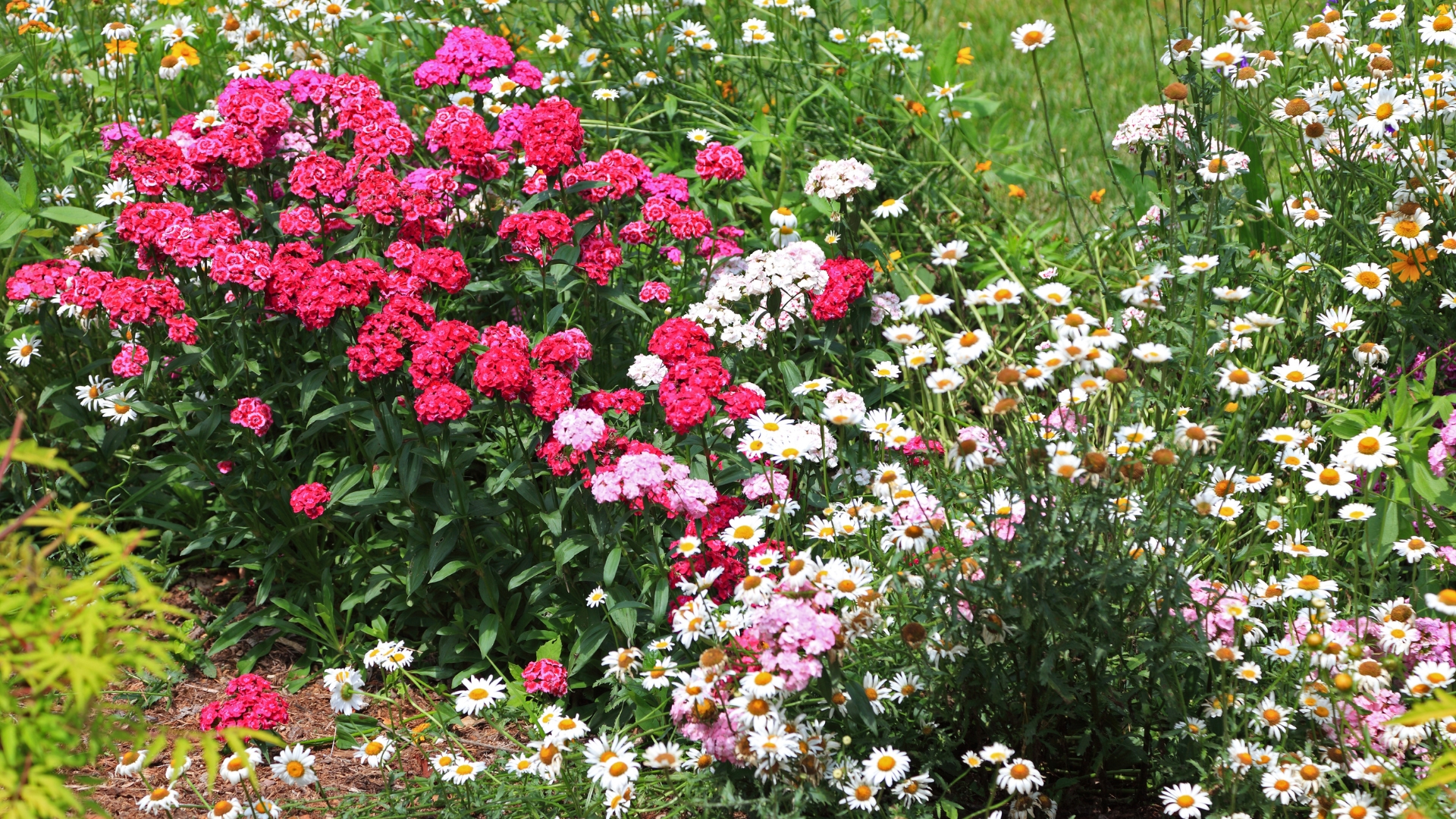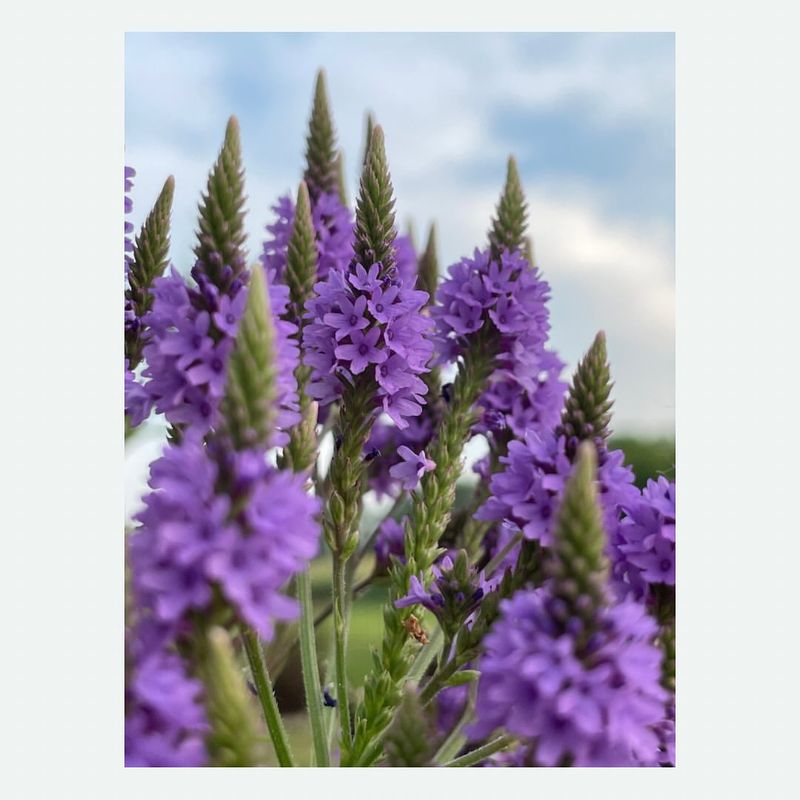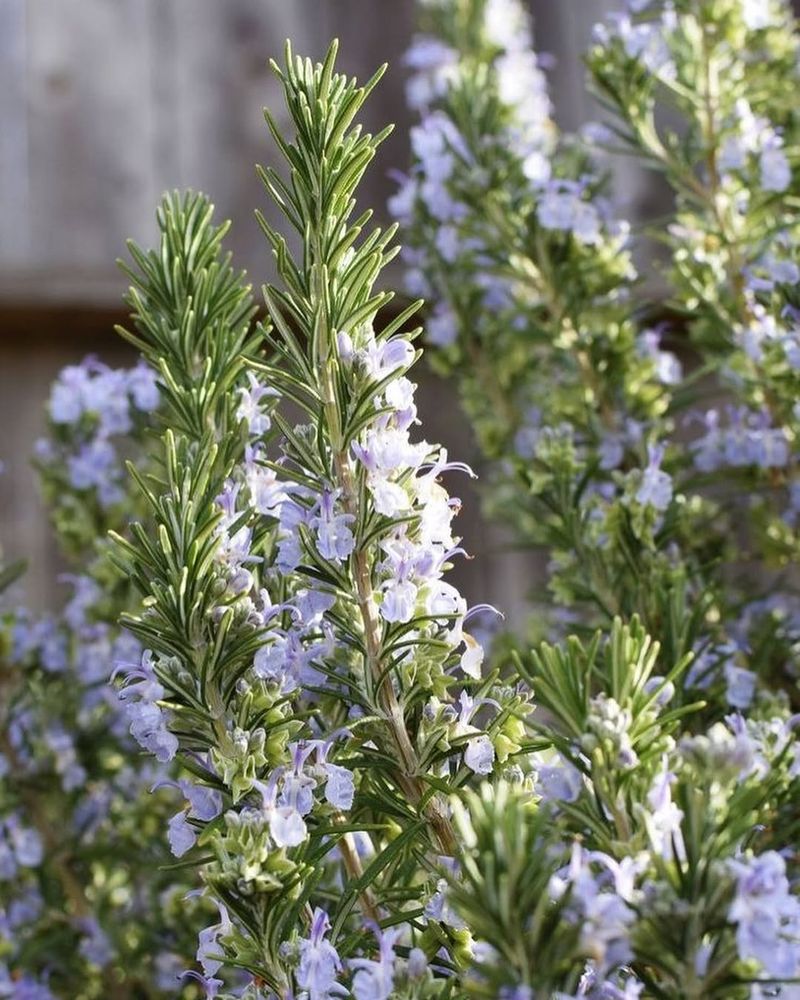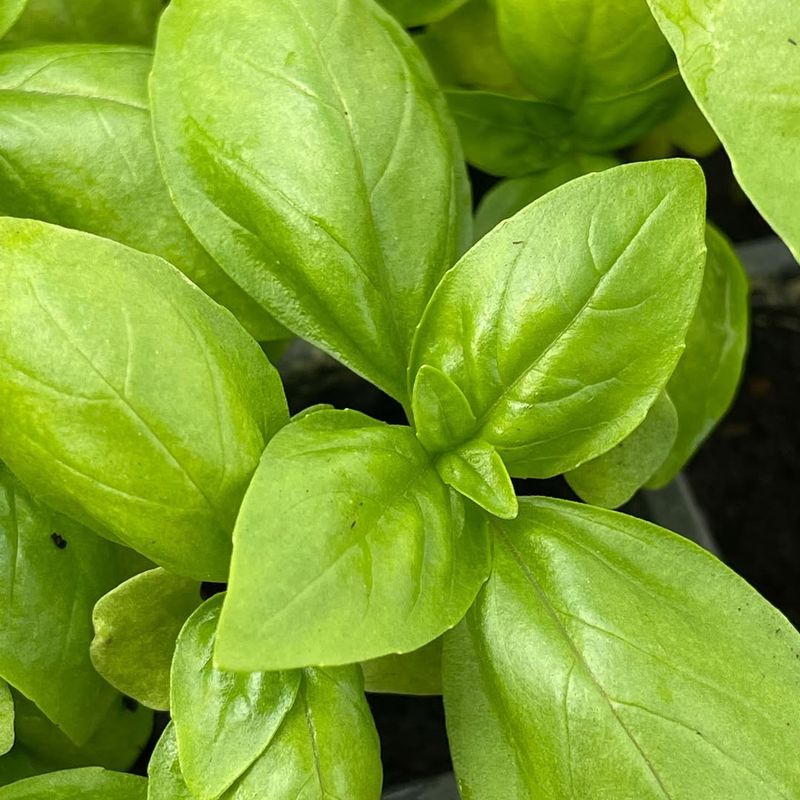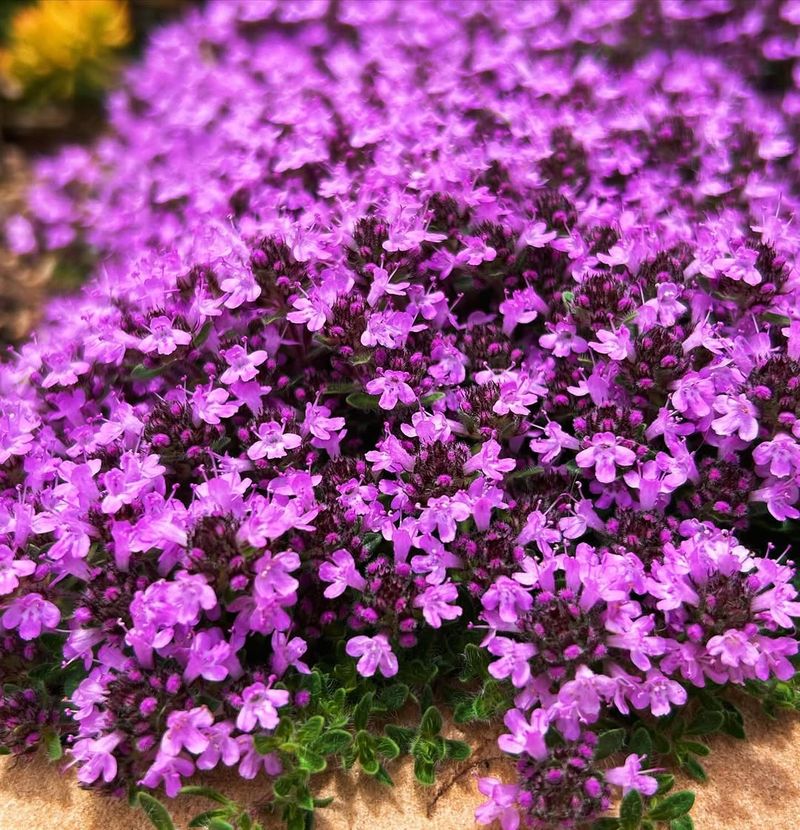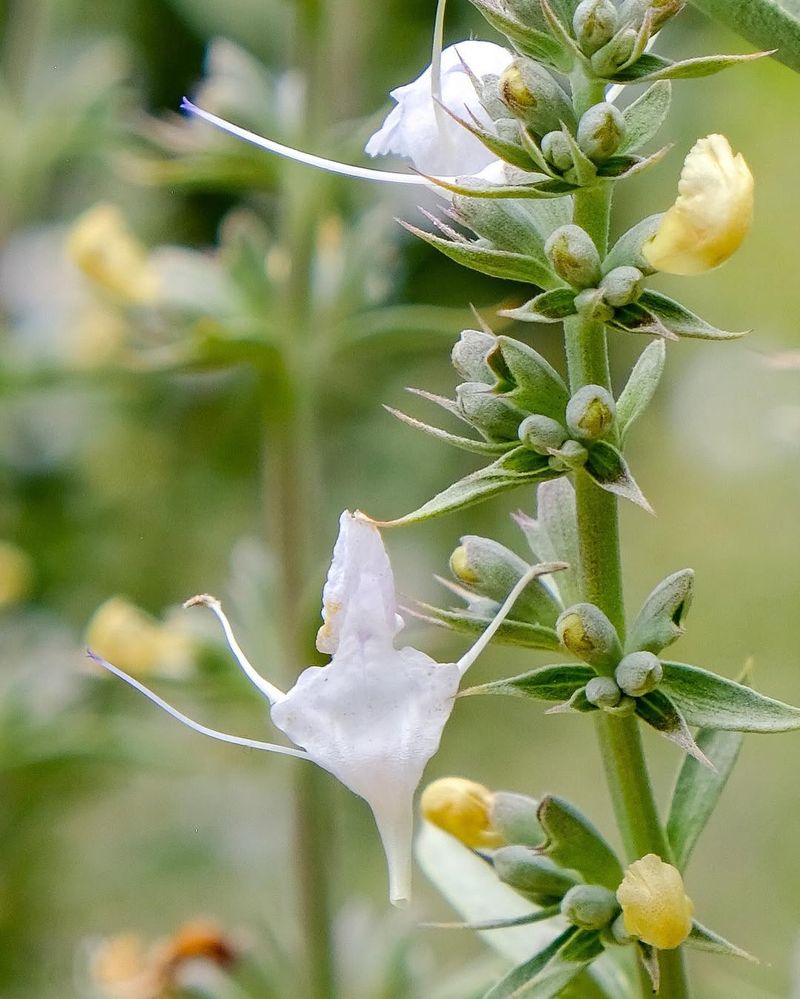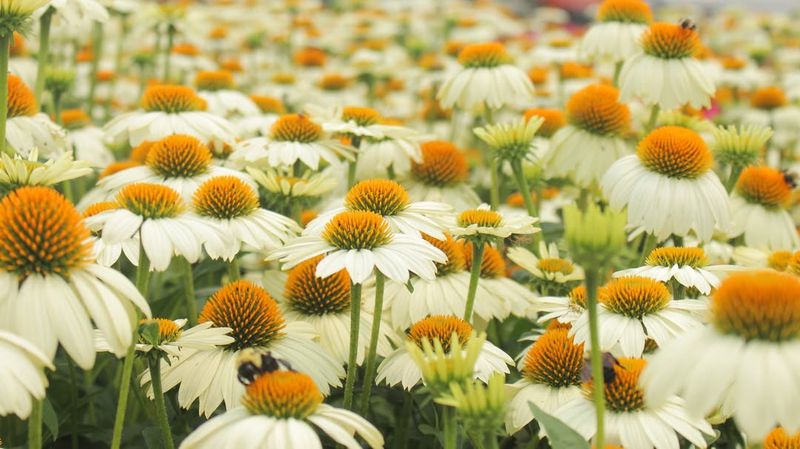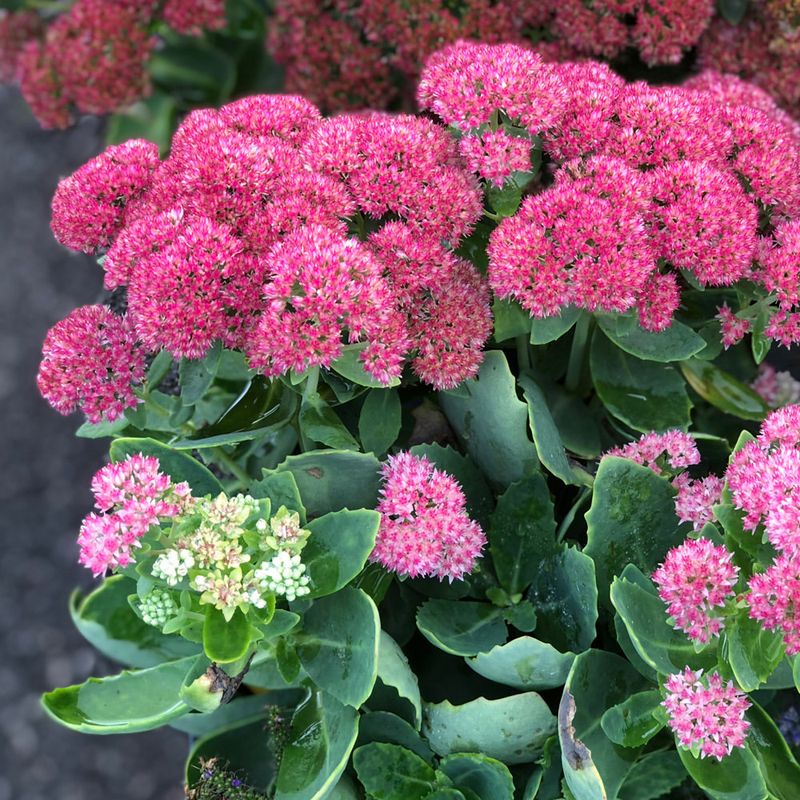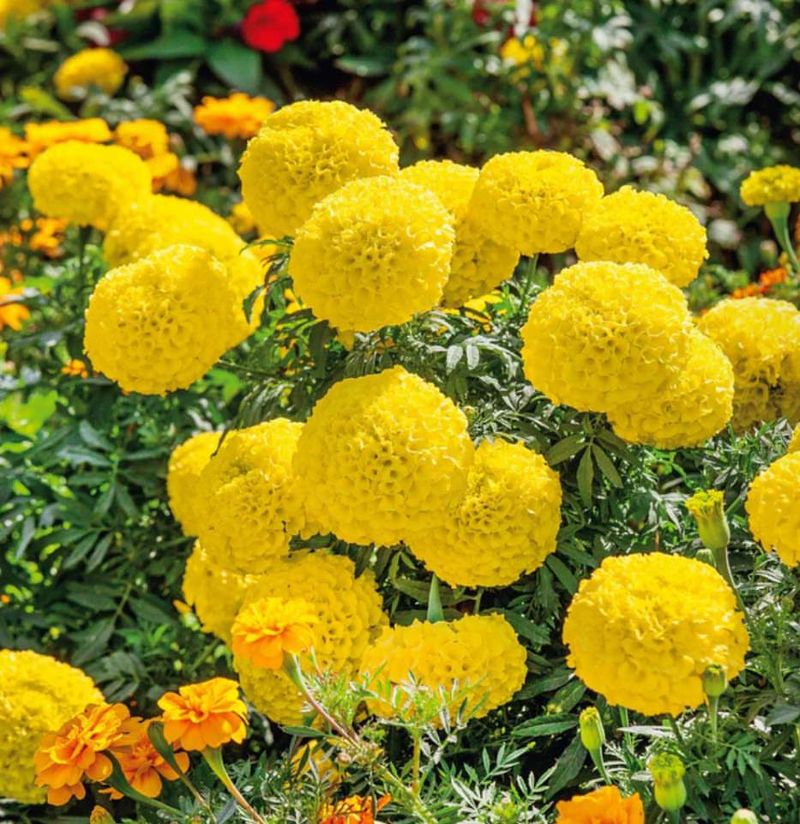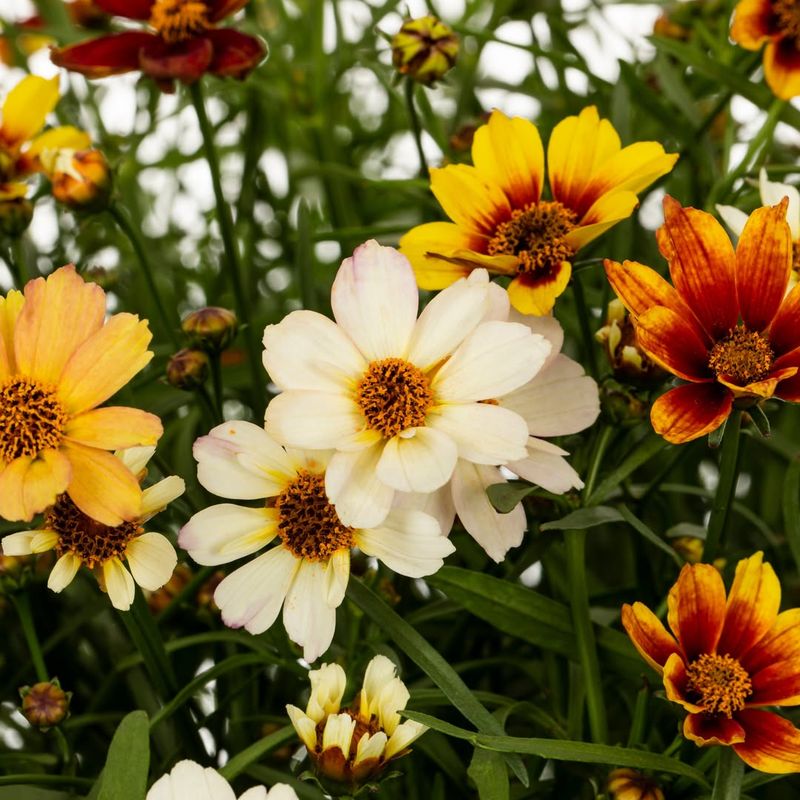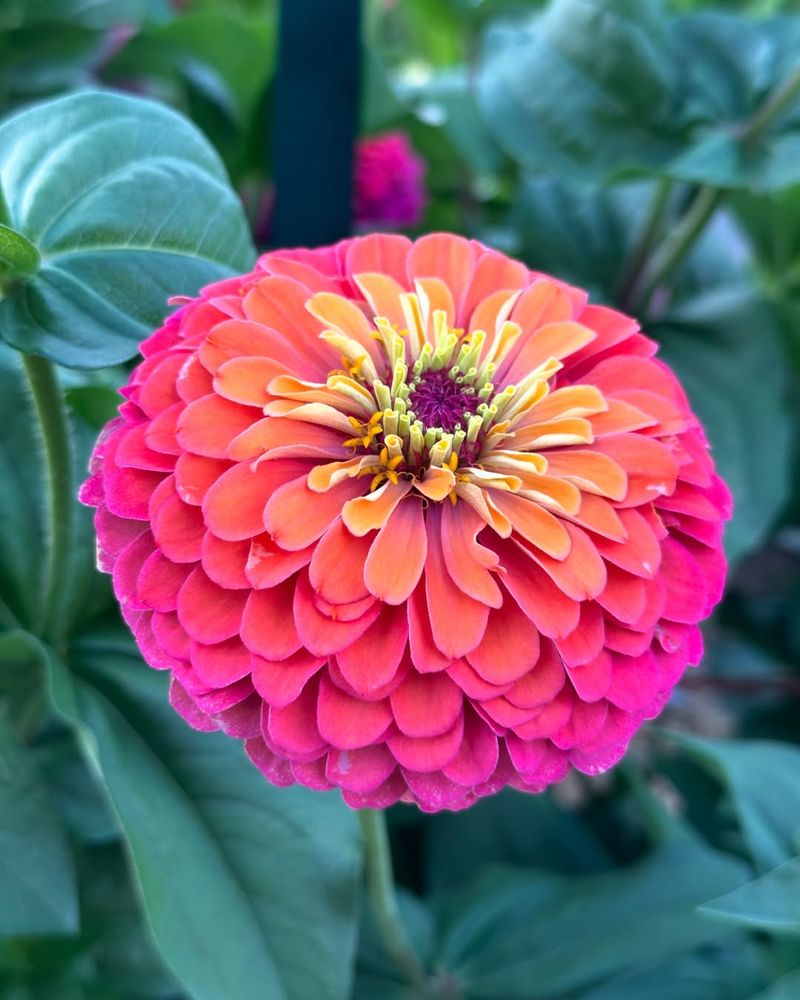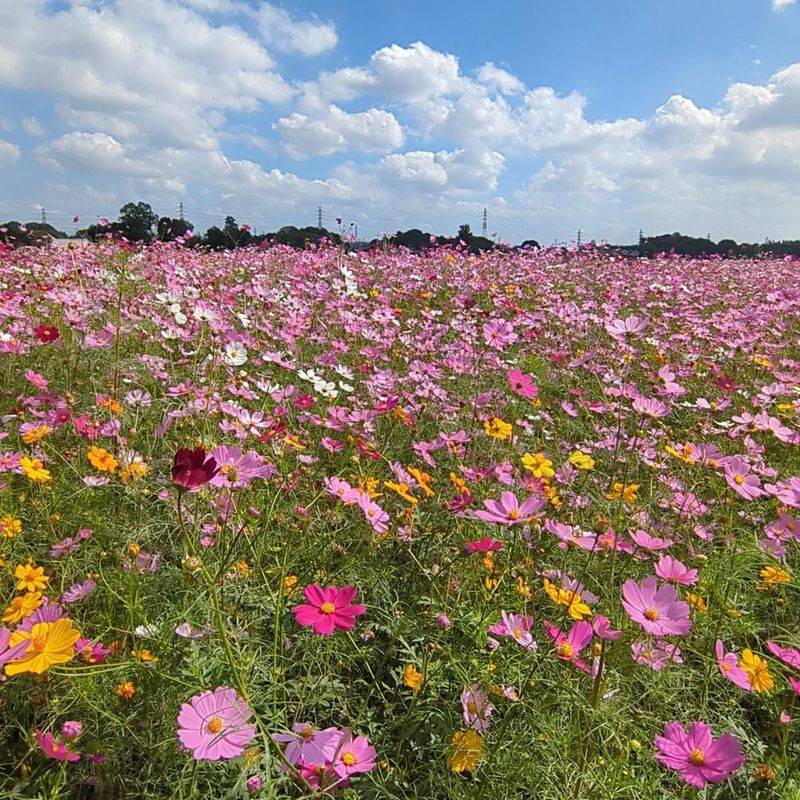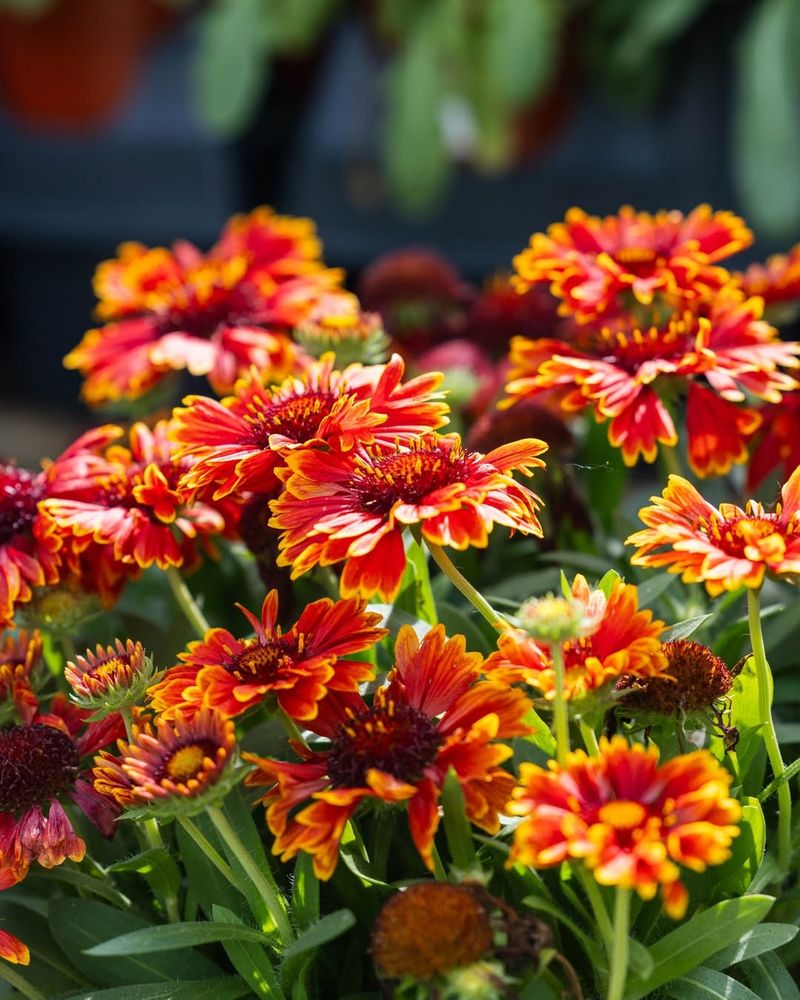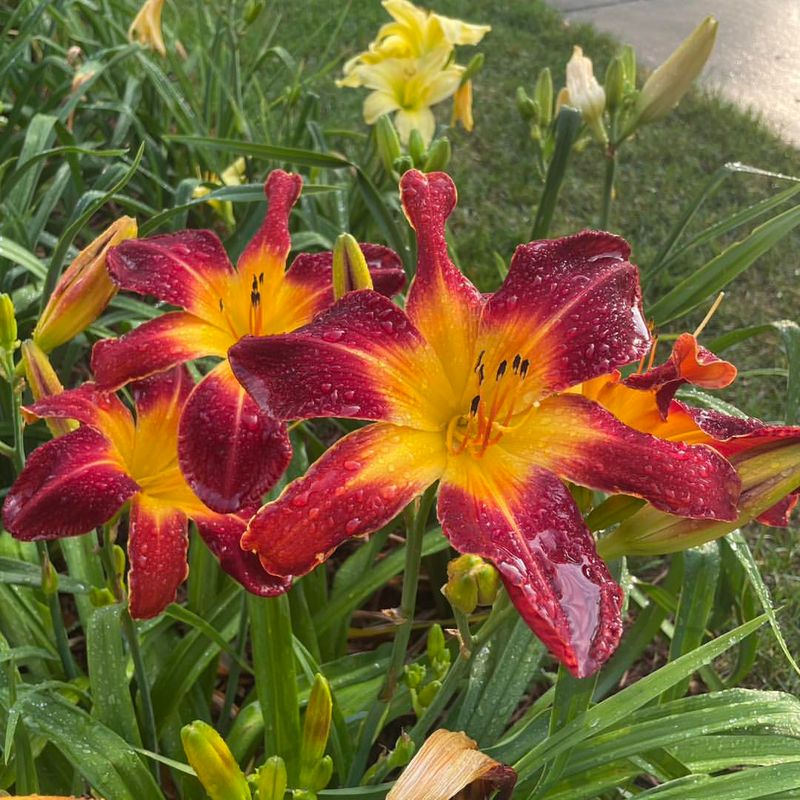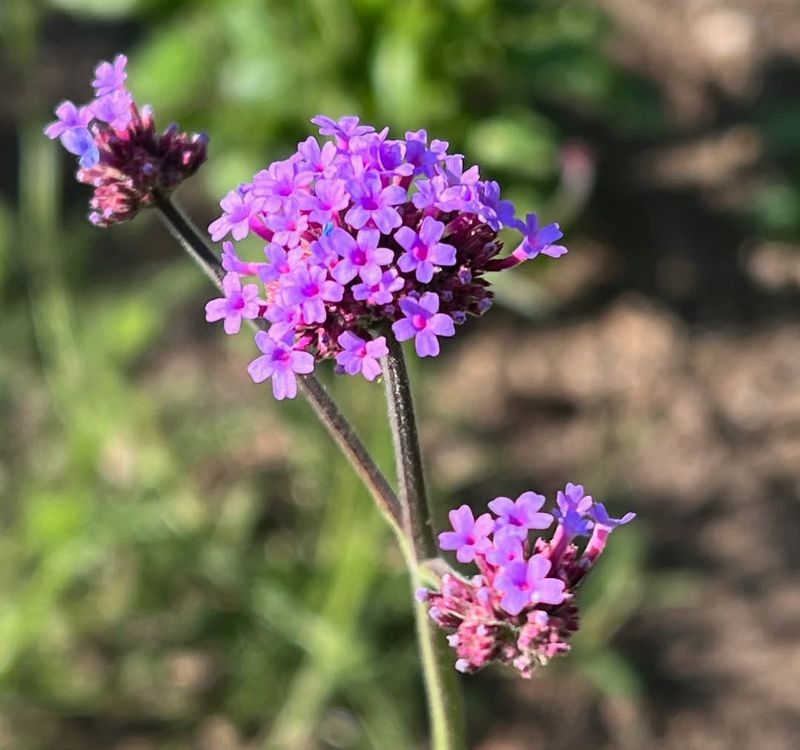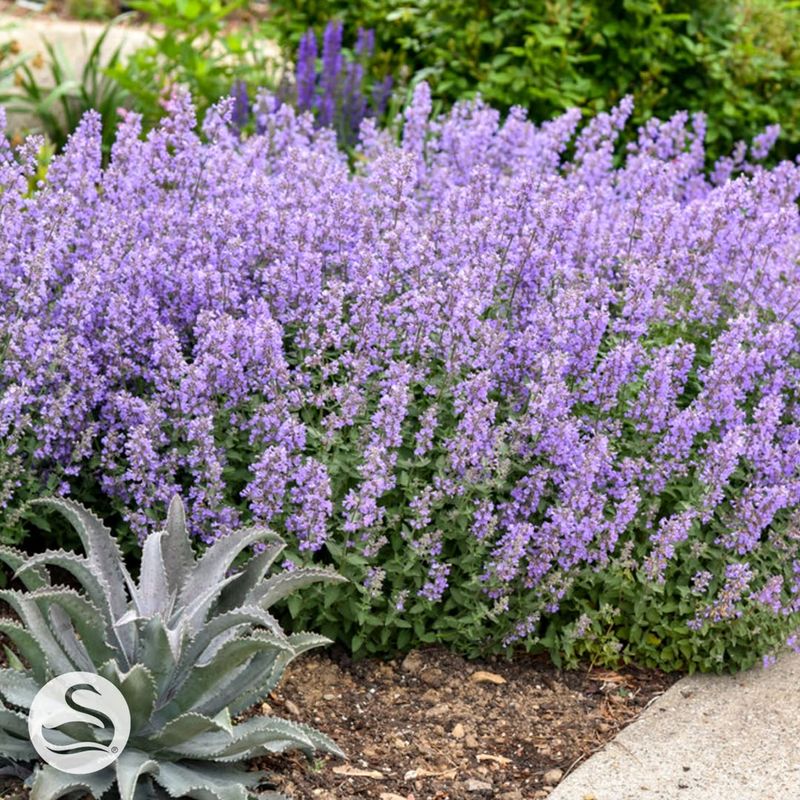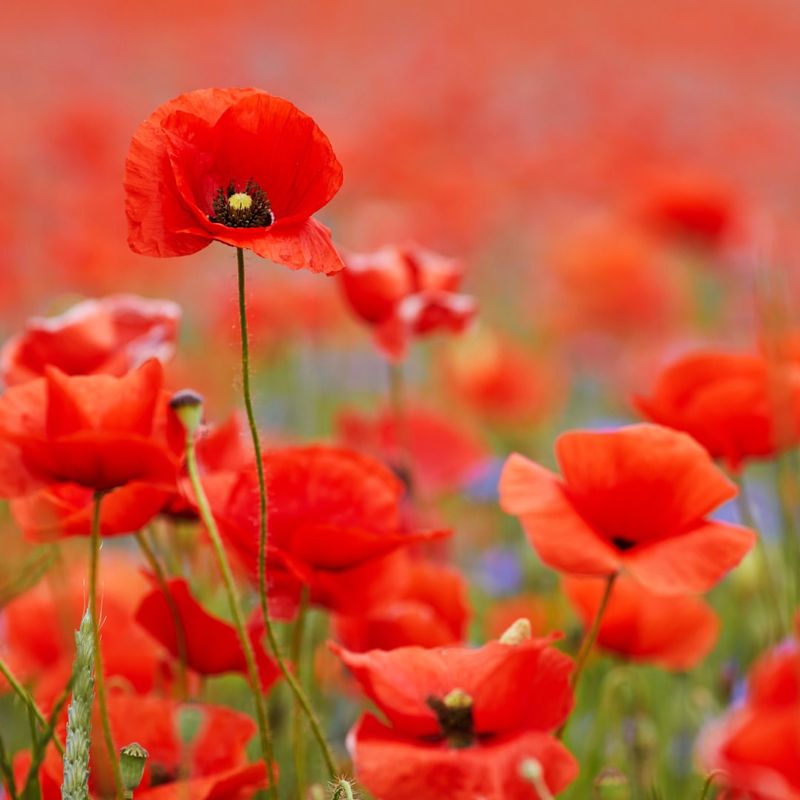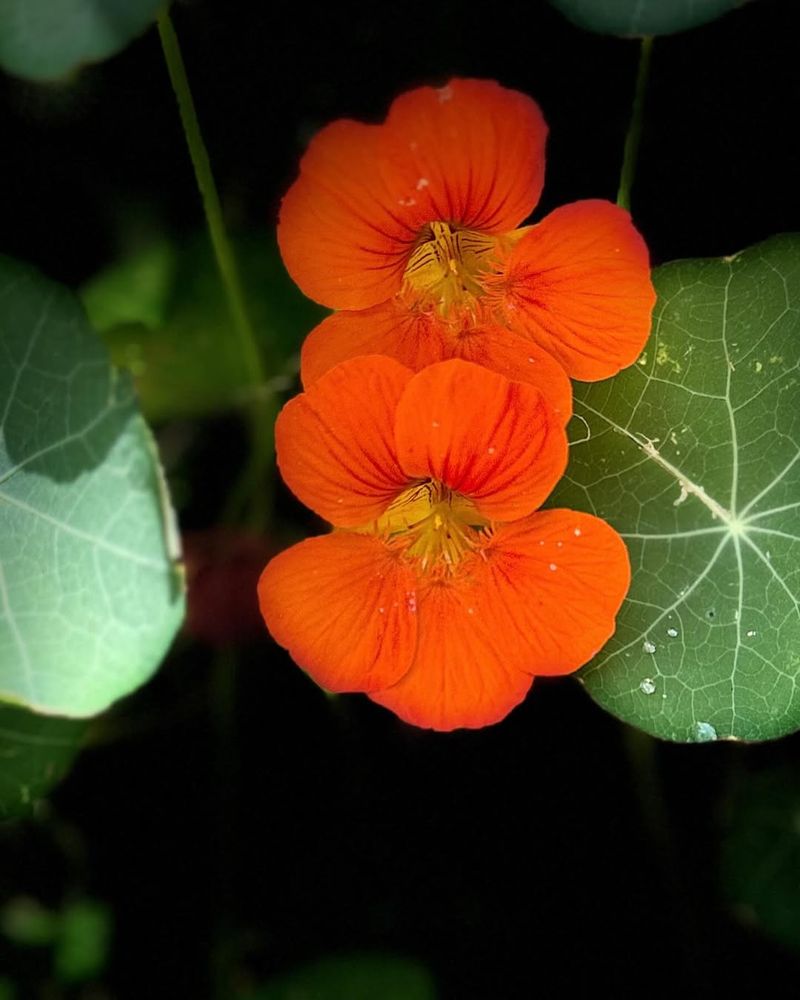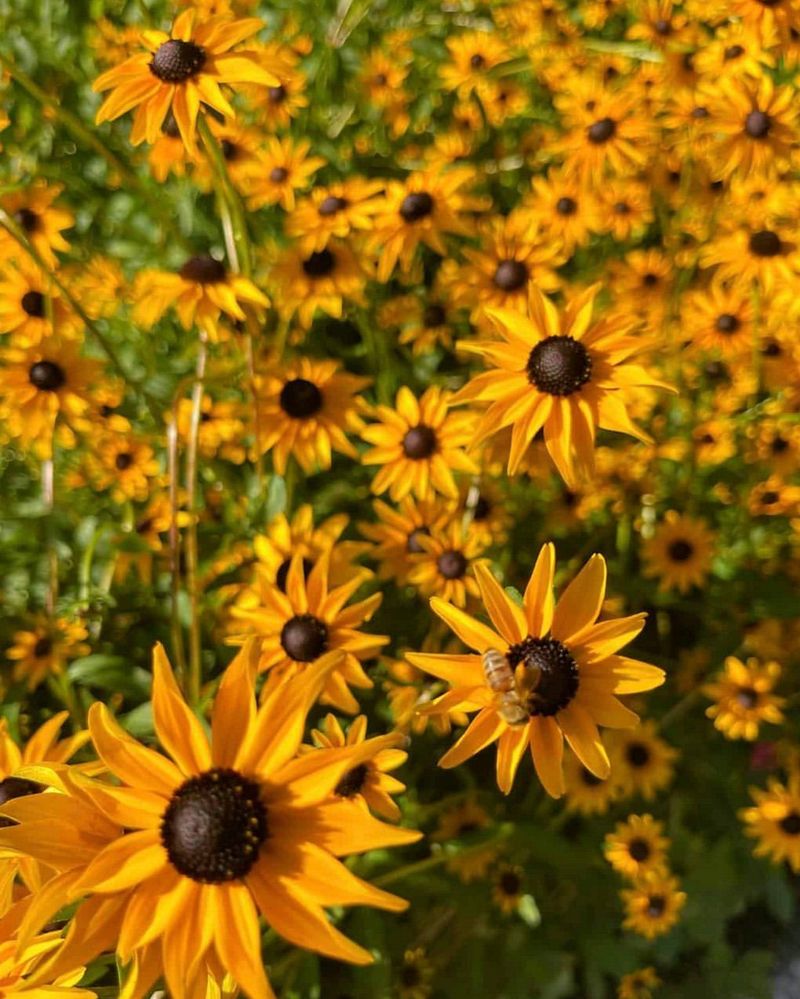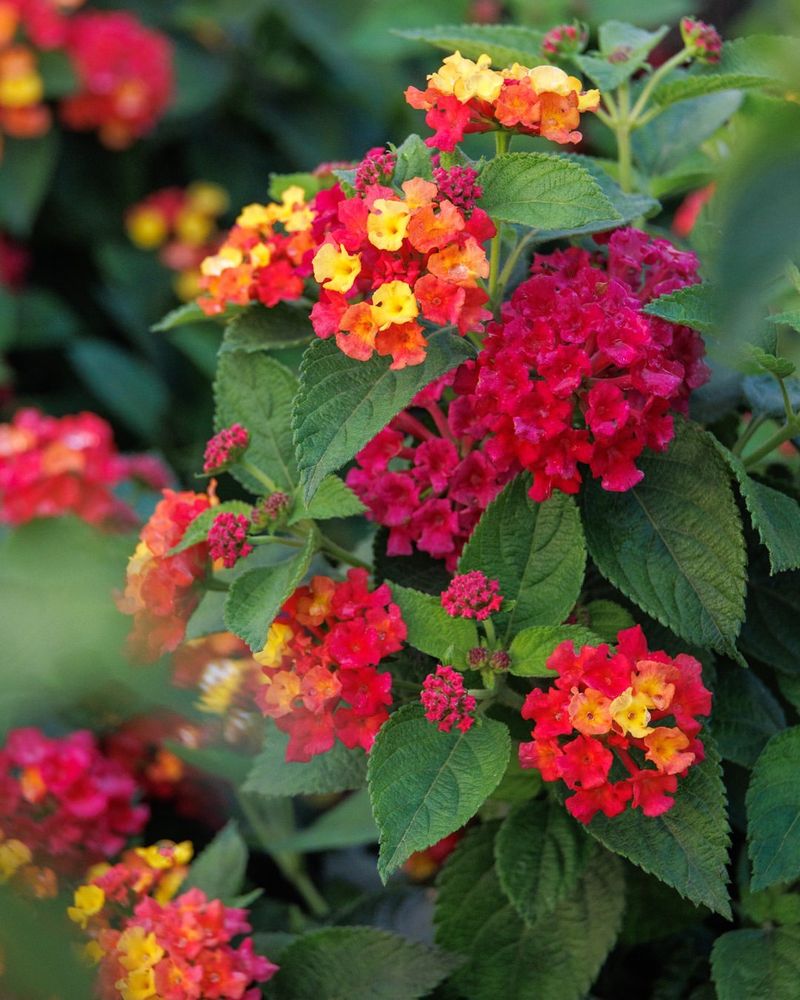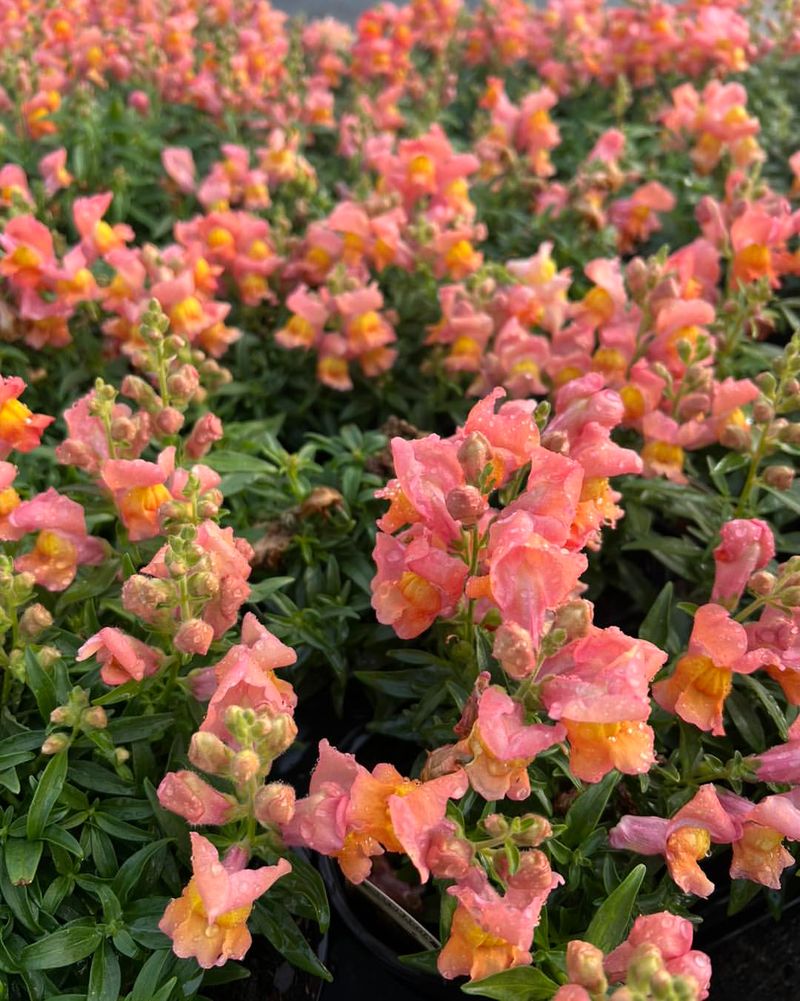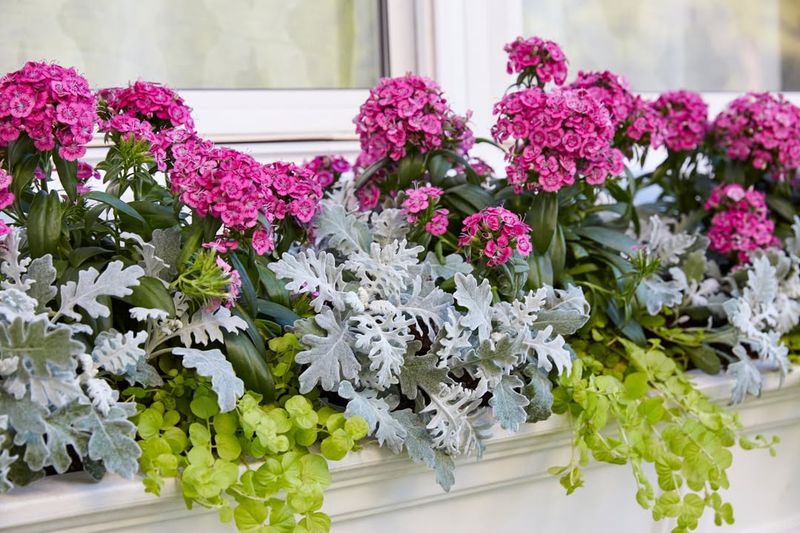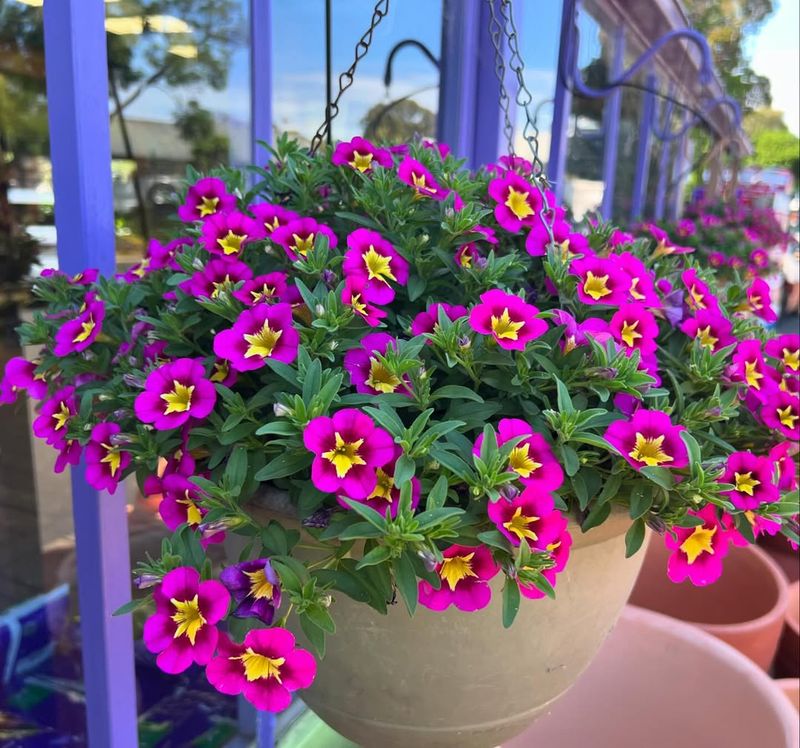Step into the vibrant world of companion planting with Dianthus, where color, fragrance, and garden magic come together in perfect harmony. These charming, frilly blooms don’t just steal the show—they also play well with others! In this guide, you’ll discover perfect plant partners that will enhance your Dianthus, creating a breathtaking, thriving garden.
From bold backdrops to delicate accents, each companion brings its own unique beauty and benefits to the mix. Get ready to turn your garden into a stunning, living masterpiece—one bloom at a time!
1. Lavender
Purple blossoms can turn any garden into a serene sanctuary. Lavender, with its calming fragrance and elegant spikes, pairs beautifully with Dianthus to create a soothing garden retreat. Its ability to deter pests while attracting pollinators makes it a valuable companion.
Besides its practical benefits, lavender adds a splash of color that complements the vibrant hues of Dianthus. Together, they form a visually appealing duo that captivates the senses, offering both aesthetic and aromatic pleasures.
2. Rosemary
Evergreen wonders bring year-round charm. Rosemary, its aromatic foliage, and sturdy nature stand as a perfect companion to Dianthus. This robust herb not only adds contrast with it’s needle-like leaves to the soft petals of Dianthus but also enriches the garden’s sensory experience with its piney scent.
Its resilience complements the delicate nature of Dianthus, creating a balanced and harmonious planting scheme. Rosemary’s ability to thrive in similar sun-soaked conditions ensures both plants flourish side by side.
3. Basil
Herbs in a garden bring both beauty and utility. Basil, with its lush green leaves and sweet aroma, makes a delightful companion for Dianthus. Known for deterring pests, this herb helps protect its floral neighbors while adding culinary value.
Basil’s vibrant color contrasts beautifully with the soft pastels of Dianthus, creating a lively visual display. Planted together, they form a garden partnership that delights both the eyes and the palate. This duo thrives in sunny spots, ensuring a garden that’s as productive as it is pretty, offering a feast for the senses.
4. Creeping Thyme
Ground-hugging herbs can weave magic around taller blooms. Thyme, with its creeping nature and aromatic leaves, serves as a charming ground cover for Dianthus. Its tiny purple flowers add a splash of color while enhancing the garden’s fragrance.
Thyme’s resilient and drought-tolerant nature ensures it is an excellent companion, flourishing alongside Dianthus in well-drained soil. This pairing ensures a low-maintenance garden that remains vibrant throughout the seasons.
5. Sage
Rustic charm meets aromatic delight in a garden that includes sage. With its textured, gray-green leaves, sage complements the vibrant blooms of Dianthus beautifully. Sage’s earthy aroma adds an extra dimension to the sensory experience.
Herb’s tough, drought-resistant nature makes it a reliable partner in the garden, ensuring both plants thrive in similar conditions. Together, they create a visually appealing and aromatic environment that attracts beneficial insects.
6. Echinacea
Tall blooms can add a touch of drama to any garden. Echinacea, with its striking flowers, forms a stunning backdrop for Dianthus. Its height and vibrant color create a layered effect that adds depth to garden designs.
The sturdy stems and long-lasting blooms of coneflowers make it a reliable companion, providing support and structure. The combination of these two plants attracts pollinators, ensuring a lively and buzzing garden.
7. Sedum
Rock-hugging beauties create a striking contrast in gardens. Sedum, with its succulent leaves and starry flowers, pairs well with Dianthus for a carefree and colorful display. Its ability to thrive in tough conditions adds resilience to garden compositions.
This low-growing nature creates a textural counterpoint to the upright blooms of Dianthus.The interplay of sedum’s fleshy leaves and the soft petals of Dianthus ensures a captivating and dynamic garden scene.
8. Marigold
Vibrant hues can light up any garden. Marigold, with its sunny disposition and bright blooms, adds a splash of color that complements the pastel tones of Dianthus beautifully. This cheerful flower not only enhances visual appeal but also repels pests.
The ease with which marigold grows makes it an ideal companion for garden beds. Together with Dianthus, they form a colorful partnership that attracts beneficial insects and brightens any space.
9. Coreopsis
Golden blooms can bring sunshine to any corner of a garden. Coreopsis, with its bright yellow flowers, adds a cheerful touch that pairs perfectly with Dianthus. Known for its long blooming period, this plant ensures continuous color throughout the season.
Coreopsis’s easy-going nature makes it a friendly companion, enjoying similar sunny conditions. Together, they attract pollinators, creating a lively and buzzing atmosphere.
10. Zinnia
Colorful blossoms can transform a garden into a vibrant paradise. Zinnia, with its bold and cheerful blooms, adds a lively touch that pairs perfectly with Dianthus. Known for its wide array of colors, zinnia ensures a dynamic and varied garden palette.
It’s ease of growth and long-lasting flowers make it a popular choice for gardeners. Together with Dianthus, zinnias form a stunning and colorful combo that attracts beneficial bugs and brightens any space.
11. Cosmos
Delicate petals can add a whimsical touch to any garden. Cosmos, with its airy and graceful flowers, complements the compact form of Dianthus beautifully. This plant’s long-lasting blooms and ability to flourish in sunny spots make it a delightful garden addition.
Cosmos’s carefree nature ensures it grows well alongside Dianthus, creating a harmonious and balanced planting scheme. Together, they attract butterflies and bees, adding life and movement to the garden.
12. Gaillardia
Fiery blooms can heat up any garden scene. Gaillardia, with its rich red and orange flowers, adds a warm and inviting touch that pairs well with Dianthus. Known for its long blooming season, this plant ensures continuous color throughout the summer.
Gaillardia’s hardiness makes it an excellent companion, thriving in well-drained soil alongside Dianthus. The combination of the two creates a garden display that’s both vibrant and resilient, attracting pollinators and resulting in a captivating and balanced garden setting.
13. Lobelia
Trailing blooms can add a cascading effect to garden arrangements. Lobelia, with its vivid blue flowers, complements the upright nature of Dianthus beautifully. This plant’s compact form and striking color make it a popular choice for borders and containers.
The preference for cooler conditions of lobelia makes it a versatile companion, enjoying partially shaded areas alongside Dianthus. The combination of lobelia’s cascading blooms with the structured form of Dianthus provides a dynamic and balanced garden scene.
14. Petunia
Hanging blooms can elevate garden designs to new heights. Petunia, with its abundant and colorful flowers, adds a cheerful touch that pairs perfectly with Dianthus. Famous for its easy care and wide range of colors, petunia ensures a dynamic and varied garden display.
This plant’s trailing habit makes it ideal for containers and hanging baskets, complementing the compact form of Dianthus. They form a stunning and colorful partnership that attracts insects (of the good kind) and brings color and life to your yard.
15. Alyssum
Fragrant carpets can add a touch of magic to garden paths. Alyssum, with its dense clusters of tiny white flowers, complements the upright nature of Dianthus beautifully. This plant’s sweet fragrance and ability to attract pollinators make it a delightful garden addition.
Alyssum’s low-growing habit and preference for sunny areas make it a perfect companion to Dianthus. This combo creates a visually appealing and harmonious garden display, offering both beauty and aroma.
16. Phlox
Cottage charm can transform any garden into a cozy retreat. Phlox, with its clusters of colorful flowers, adds a touch of nostalgia that pairs perfectly with Dianthus. Renowned for its sweet fragrance and long blooming period, phlox ensures a delightful garden experience.
The easy-care nature and preference for sunny spots make phlox an ideal companion for Dianthus. Together, they form a stunning and colorful partnership that attracts pollinators and enhances any space.
17. Daylily
Vibrant colors can light up any garden. Daylily, with its bold and cheerful blooms, adds a lively touch that pairs perfectly with Dianthus. Known for its wide range of colors and long blooming period, daylily ensures a dynamic and varied garden display.
Daylily’s hardy nature and preference for sunny spots make it an excellent companion for Dianthus. These companions provide a stunning and colorful partnership that attracts pollinators and brightens any space.
18. Verbena
Clusters of color can add a lively touch to garden designs. Verbena, with its vibrant and long-lasting flowers, complements the compact form of Dianthus beautifully. This plant’s ability to attract pollinators and thrive in sunny spots makes it a delightful garden addition.
Verbena’s easy-care nature and wide range of colors make it an ideal companion, thriving alongside Dianthus in well-drained medium. They offer a visually appealing and harmonious garden display, provoding both beauty and ecological benefits.
19. Catmint
Soft waves of color can paint a garden masterpiece. Catmint, with its delicate purple flowers, adds a calming touch that pairs beautifully with Dianthus. Famous for its aromatic foliage and ability to attract pollinators, catmint enhances the sensory experience.
Both plants flourish in sunny, well-drained spots which makes catmint and Dianthus perfect companions.
This combo results in a visually appealing and harmonious garden display, creating both color and texture in your landscape.
20. Poppy
Wild blooms can bring a touch of nature’s beauty to any garden. Poppy, with its vibrant and bold flowers, adds a dramatic touch that pairs beautifully with Dianthus.
Known for its easy care and ability to attract pollinators, poppy ensures a lively garden atmosphere.This plant’s preference for sunny spots and well-drained soil makes it an ideal companion for Dianthus. Together, they create a stunning and colorful partnership that enhances any space.
21. Nasturtium
Trailing vines can add a touch of whimsy to garden designs. Nasturtium, with its bright and cheerful flowers, complements the upright nature of Dianthus beautifully. It’s ability to survive in poor soil and deter pests makes it a valuable garden addition.
Nasturtium’s trailing habit and preference for sunny spots make it a perfect buddy, growing well alongside Dianthus. Combined, their colorful flowers offer dynamic and balanced garden space, offering both beauty and utility.
22. Black-Eyed Susan
Golden beauties can brighten any garden landscape. Black-eyed Susan, with its striking yellow flowers and dark centers, adds a cheerful touch that pairs perfectly with Dianthus. Renowned for its easy-care nature and ability to attract pollinators, this plant ensures a lively garden setting.
Black-eyed Susan’s preference for sunny spots and well-drained soil makes it an ideal companion for Dianthus. These plants create a stunning and colorful partnership that enhances any landscape.
23. Helenium
Fiery hues can ignite any garden scene. Helenium, with its rich red and orange flowers, adds a warm and inviting touch that pairs well with Dianthus. Known for its long blooming season, this plant ensures continuous color throughout the summer.
Helenium’s hardiness makes it an excellent companion, flourishing a in well-drained medium alongside Dianthus. The combination of the two produces a vibrant and resilient yard space, attracting beneficial bugs and brightening the landscape.
24. Lantana
A burst of tropical color can enliven any garden. Lantana, with its vibrant and multi-colored flowers, adds a lively touch that pairs beautifully with Dianthus. Famous for its drought tolerance and ability to attract butterflies, lantana enhances the garden’s ecological appeal.
This plant’s sun-loving nature makes it a perfect companion for Dianthus, thriving in similar conditions. Lantana and Dianthue create a colorful and harmonious garden display, offering both beauty and environmental benefits.
25. Snapdragon
Playful spikes can add personality to any garden. Snapdragon, with its whimsical and colorful flowers, complements the structured form of Dianthus beautifully. Known for its long blooming season and ability to attract pollinators, snapdragon ensures a delightful garden display.
Snapdragon’s preference for sunny areas and well-drained mixes makes it an ideal Dianthus buddy. These flowering beauties create a stunning and colorful partnership that combines vibrant and pastel shades.
26. Dusty Miller
Silvery tones can add a touch of elegance to any garden. Dusty Miller, with its soft and velvety leaves, creates a beautiful backdrop for the vibrant blooms of Dianthus. This plant’s drought tolerance and pest resistance make it a valuable garden addition.
Dusty Miller’s preference for sunny spots and well-drained soil ensures it thrives alongside Dianthus. This combo offers both color and texture. Dusty miller’s silvery foliage and the colorful blooms of Dianthus provide a dynamic and balanced landscape scene.
27. Calibrachoa
Miniature blooms can make a big impact in garden containers. Calibrachoa, with its small and vibrant flowers, adds a cheerful touch that pairs beautifully with Dianthus. Known for its trailing habit and long blooming period, this plant ensures a dynamic and varied garden display.
The sun-loving nature of calibrachoa makes it a perfect companion for Dianthus. These two partners in crime create a harmonius contrast with calibrachoa’s colorful blooms and the pastel shades of Dianthus.

